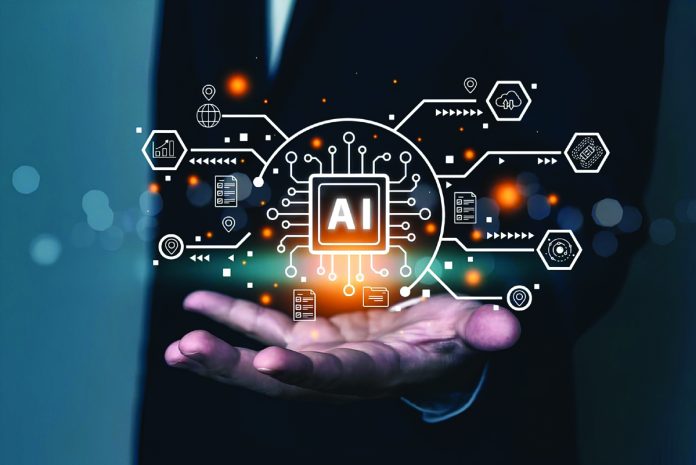Wajeeha Najam
In the 21st century, humanity navigates a profound paradox; while digital innovation speeds up global development and connectivity, it simultaneously deepens the environmental crises that threaten our collective future. The Information and Communication Technology (ICT) sector, often praised as the foundation of today’s economy, also contributes significantly to environmental damage worldwide. It is responsible for 23% of global carbon dioxide (CO2) emissions about the same as the entire aviation industry and its impact is growing quickly. Moreover, the world is bracing for a surge in electronic waste (e-waste), expected to reach 75 million metric tons annually by 2030, and with only 17.4% of it properly recycled as of 2022. Yet within the same digital infrastructure lies a paradoxical opportunity. The transformative potential of artificial intelligence (AI) to combat the very challenges it worsens, if developed and deployed with responsibility and foresight.
The environmental challenges of our time are interconnected, complex, and intensifying. Climate change, biodiversity loss, water scarcity, and pollution increasingly threaten ecosystems and human livelihoods across all continents. According to the Intergovernmental Panel on Climate Change (IPCC), we are likely to go over a 1.5°C rise in global temperatures by 2030. This level is dangerous because it could cause permanent damage to the environment, like melting ice sheets and the dying of rainforests. Amid these environmental threats, the rapid growth of digital technology often flies under the radar. Globally, data centers alone consume over 1% of total electricity use, a number projected to rise significantly with the proliferation of AI and blockchain technologies.
By 2025, data storage demands are expected to exceed 200 zettabytes, with each zettabyte requiring immense energy inputs for cooling and computation. Meanwhile, the production and disposal of digital devices have created an unsustainable cycle of consumption over 347 million metric tons of raw materials are extracted annually for electronics, many of which are discarded within three years of purchase.
Despite its footprint, AI offers powerful tools to address environmental degradation. When harnessed effectively, AI can optimize energy systems, enhance resource efficiency, and bolster predictive capabilities. In energy management, Google’s Deep Mind project demonstrated AI’s ability to reduce cooling energy use in data centers by 40%, a development that, if scaled globally, could save billions of kilowatt-hours annually.
AI also enables the development of smart grids dynamic energy networks that integrate renewable sources and respond in real-time to fluctuations in supply and demand. A study by the International Renewable Energy Agency (IRENA) found that AI-enabled grids could cut global energy sector emissions by 1015% by 2030. In Germany, the ‘Energiewende’ policy utilizes AI to forecast solar and wind energy output, stabilizing the grid and minimizing reliance on fossil fuels. Urban centers are also increasingly turning to AI to manage sustainability challenges. Singapore’s Smart Nation initiative uses AI to monitor traffic flow, optimize street lighting, and manage building energy consumption, reducing the city’s overall carbon footprint. Barcelona and Amsterdam employ similar AI-driven urban planning tools, resulting in a 30% reduction in traffic congestion and improved air quality. At the same time, AI is transforming environmental monitoring.
Platforms like Global Forest Watch use satellite data to detect illegal deforestation in the Amazon in near real-time, contributing to an 18% reduction in deforestation rates in monitored areas between 2015 and 2020. In the same way, AI helps protect the oceans by tracking endangered animals and areas with a lot of plastic waste, with about 80% accuracy. This helps guide cleanup teams to the right places. In 2022, the Ocean Cleanup project used AI to find large groups of waste in the Great Pacific Garbage Patch and removed over 100,000 kilograms of plastic in just one mission.
Agriculture, a sector deeply intertwined with both food security and environmental impact, is being revolutionized by AI. Precision agriculture technologies use AI to monitor soil conditions, weather patterns, and crop health, reducing pesticide use by 30% and increasing yields by 2040%. Companies like Climate Corporation and IBM’s Watson Decision Platform for Agriculture are helping farmers in Africa and South Asia improve output while conserving water and reducing methane emissions from rice paddies and livestock. AI also enhances disaster management. During Australia’s devastating 2020 wildfires, AI tools analyzed satellite data to predict fire spread and helped prioritize firefighting resources. These interventions saved not only lives but also thousands of hectares of forest.
However, AI is not without its environmental costs. Training a single large AI model, such as GPT-3, can emit over 284 tons of carbon dioxide. The equivalent of five cars’ total emissions over their lifetime. As AI becomes more complex and computationally intensive, these emissions will likely increase unless checked by sustainable practices. Moreover, AI’s energy sources matter. In regions where electricity is still largely generated from coal or natural gas, such as parts of India and China, the carbon intensity of AI development can be alarmingly high. Without access to clean energy infrastructure, the green promise of AI risks turning into a digital liability. Alongside environmental concerns, ethical and social challenges must also be addressed. AI models trained on biased data can produce misleading environmental predictions, misguiding policy interventions. Additionally, the Global South often lacks access to AI infrastructure and education. While Silicon Valley develops state-of-the-art green technologies, communities most vulnerable to climate change, such as small island nations and Sub-Saharan African regions struggle to access even basic AI tools. This intensifies climate inequities, leaving those least responsible for emissions with the fewest resources to adapt or respond.
A hopeful way forward is using ‘Green AI’, which means creating and using AI in ways that save energy and protect the environment. Green AI aims to lower the carbon emissions produced when training and running AI systems. New methods like model compression, federated learning, and energy-saving AI chips help AI work well while using less electricity. For example, NVIDIA, a big American tech company, made A100 chips that use up to 50% less energy per task than older models. New types of computer programs, inspired by quantum technology, may save even more energy in the future. Big tech companies are starting to take action. Microsoft promises to be carbon negative by 2030, meaning it will remove more carbon than it produces. It also plans to erase all carbon it has ever released by 2050. Google says it has been using 100% renewable energy since 2017 and is now funding AI projects that track and lower methane emissions, which are 84 times stronger than carbon dioxide over 20 years. Policies are just as important in making sure AI helps the environment in the long run. Governments need to support eco-friendly AI by offering rewards like subsidies and tax cuts, and by keeping strict track of carbon emissions from AI systems. The European Union’s Green Deal is one example. It includes a digital shift as part of its plan to fight climate change, making sure new technologies also help cut emissions. Groups working together globally also make a difference. For example, the TRACE (Tracking Real-time Atmospheric Carbon Emissions) initiative uses AI to track and report carbon emissions from 100,000 places around the world in real-time. This shows how international teamwork and data sharing can have a big positive impact.
In the end, AI’s role in protecting the environment is not fixedit depends on the choices, values, and rules made by people. AI has two sides; it can cause pollution, but it can also help solve environmental problems. This means we must use it carefully and responsibly. The real challenge is to build smarter machines and create AI in a way that is fair, ethical, and good for the Earth. We need to balance our drive for new technology with caring for the environment and make sure everyone has fair access to AI tools. This will decide if digital progress helps us protect the planet or makes things worse. At this important moment, our job is clear; to use AI not just for making money or being efficient, but to save the planet and support the well-being of future generations.
The author is a Research Officer at Rabita Forum International (RFI).







